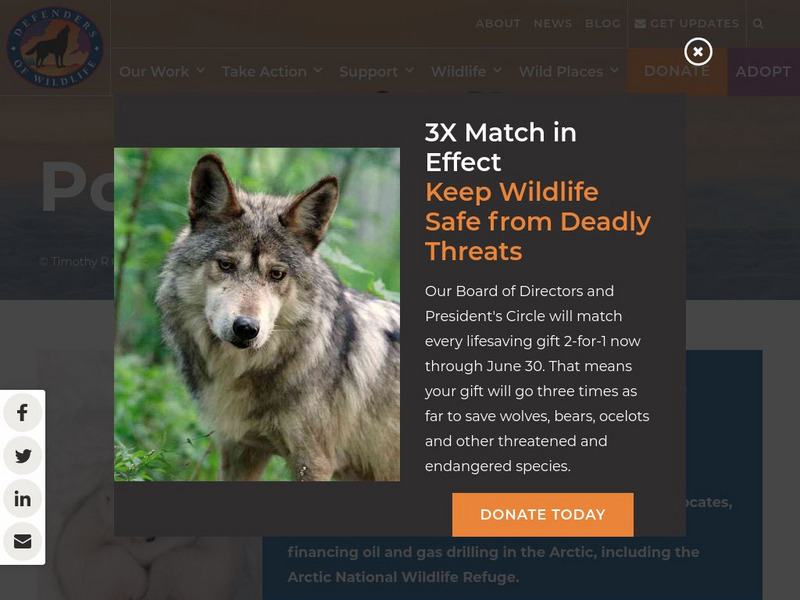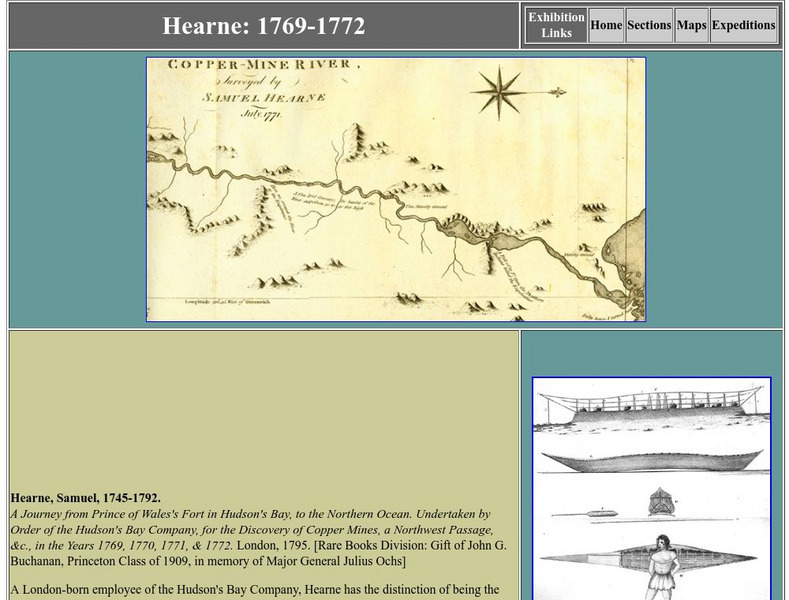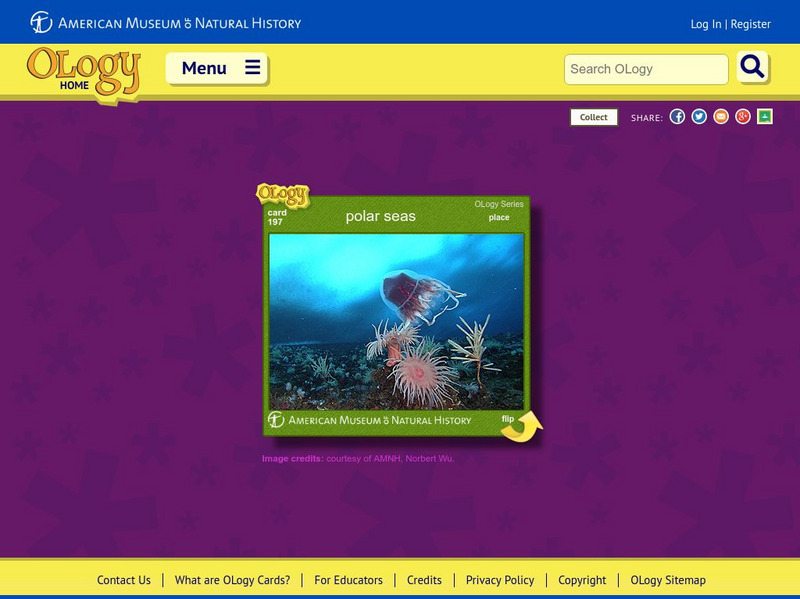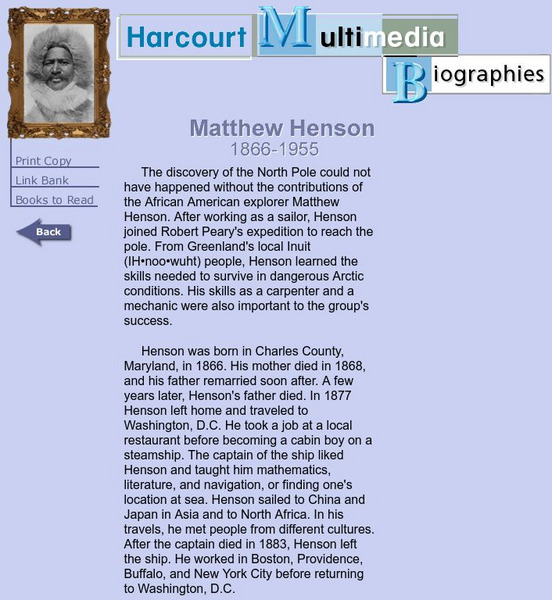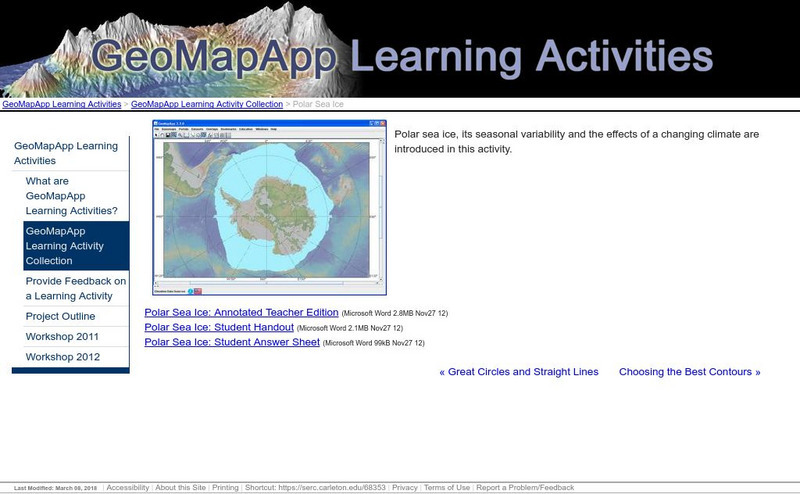Hi, what do you want to do?
A to Z Teacher Stuff
A to Z Teacher Stuff: Polar Bears
This learning activity from A to Z Teacher Stuff explores what keeps polar bears warm in the Arctic. The activity allows young scholars to experience what a layer of "blubber" protection is like.
McGill University
Mc Gill University: Canadian Biodiversity: Ecozones: Taiga Shield
This ecozone stretches eastward from the Taiga Plains to just south of the Southern Arctic. This brief, concise description includes a collection of images of the animals and birds native to the location. Many of the images include...
Curated OER
Cbc.ca: The Search for the Northwest Passage :Frobisher's Second Voyage
Forbisher's second expedition set out to find gold rather than a route to China. Why the change in goals? He claimed the Arctic territory for England and returned with ships loaded with ore. Had he given up the dream of the Passage?
University of Houston
University of Houston: Engines of Our Ingenuity: No. 932: Martin Frobisher
An audio commentary and transcript discussing the life of British explorer, Martin Frobisher. Focuses on Frobisher's search for gold and how this search led him to the discovery of the Northwest Passage through the Arctic.
Science Education Resource Center at Carleton College
Serc: Life in Extreme Environments: Who Is on Top in the Food Chain?
In this lesson, young scholars will design experiments to gain some understanding of the feeding rates of Rotifers and/or Tardigrades. They will use organisms collected locally or provided by the teacher to explore differences between...
Oswego City School District
Regents Prep: Ecosystems/communities
Abiotic factors vary in the environment and determining the types and numbers of organisms that exist in that environment. Factors which determine the types and numbers of organisms of a species in an ecosystem are called limiting...
TED Talks
Ted: Ted Ed: How an Igloo Keeps You Warm
If you ever find yourself stranded in the snowy Arctic, you're gonna need to know how to build an igloo. But how can building a house made of ice keep you warm? It's Okay To Be Smart explains. [5:16]
Other
Explore North: All About Polar Bears
This resource provides an overview of polar bears in the arctic. The content includes a look at polar bear habitat, population, diet, and more. Several photographs of polar bears are also included.
Other
Inuit Life in Nunavik
This Inuit project was created by students at a school in northern Quebec as a whole school project. It covers the topics of Inuit winter wear, traditional tools, community businesses, a day in the life of a child, school life, teenage...
Defenders of Wildlife
Defenders of Wildlife: Polar Bear
Has a fact sheet on the polar bear and video footage of a polar bear in the Arctic.
Wonderville Media
Wonderville: Sharks
There are over 400 different species of sharks that live in the earth's oceans. Most sharks live in mild or warm parts of oceans. However, there are a few that live in cold waters, like the Greenland shark, which lives in the Arctic, and...
Wonderville Media
Wonderville: Oceanographers
The planet Earth has more ocean than land, so oceanographers have a lot to work with! Whether they study marine biology, tides, engineering, or water quality, there is always more to learn about the ocean and the life within it. While...
BBC
Bbc Schools: Ks2 Bitesize: Science: Materials: Changing States
Investigate the changing states of water as you help Steve stay alive while in the Arctic. Includes background information about changing states of matter and about the water cycle, as well as a quiz.
Princeton University
Princeton University Library: Exhibition: Of Maps and Men: Samuel Hearne
Entry about eighteenth-century explorer Samuel Hearne, from a larger exhibition about the search for a passage to the Orient through Canada. Hearne is credited with surveying the Coppermine River and with being the first European to view...
Council for Economic Education
Econ Ed Link: Traditional Economies and the Inuit
The Inuit people of northern Canada provide an example of a traditional economy. For thousands of years, Inuit parents have taught their children the survival skills needed to survive in the Arctic Circle's severe climate. Students will...
PBS
Pbs: Modeling Fraction Multiplication Using Arrays
This video illustrates a word problem involving the multiplication of fractions using an array to model the solution visually. The problem involves puffins, arctic birds that live in colonies and fish to feed their young.
Other
Athro Limited: Tundra
Graphics and descriptions of the permafrost, low area vegetation, high area vegetation, and landforms.
American Museum of Natural History
American Museum of Natural History: Polar Seas O Logy Card
Flip over this interactive OLogy card and start learning bite-size pieces of useful information about the marine life that lives in polar-sea regions.
Houghton Mifflin Harcourt
Harcourt: Biographies: Matthew Henson 1866 1955
Find out about the exciting life of African American explorer Matthew Henson, who helped to discover the North Pole along with Robert Peary. Click on a camera to view some great photos.
Science Education Resource Center at Carleton College
Serc: Polar Sea Ice
Polar sea ice, its seasonal variability, and the impact of a changing climate are investigated in this activity. Young scholars will also explore the differences between polar regions that result from Antarctica being a continent and the...
World Wildlife Fund for Nature
Wwf: Our Earth: Ecoregions: Habitats: Polar Regions
A simple introduction and overview of the polar regions. Includes a link to information about animals that live in a polar habitat.
Other
U.s. Antarctic Program
This government site delves into the research of all aspects of the Antarctic region including its ecosystems, its impact on the climate, and aerospace.
Varsity Tutors
Varsity Tutors: Web English Teacher: Theodore Taylor
What do you know about the life and work of Theodore Taylor? Use this online resource to discover information about this famous author.
National Wildlife Federation
National Wildlife: The Incredible Shrinking Polar Bears
This article, published by National Wildlife Magazine (February/March 2004 issue), offers an insightful look into the life of the polar bears of Canada's Hudson Bay. The article looks at why these bears are losing weight and bearing...
Other popular searches
- Arctic Animals
- Arctic Food Chain
- Arctic Ocean
- Arctic Ocean Diorama
- Preschool Arctic Animals
- Arctic Plants and Animals
- Arctic Region
- Arctic Circle
- Arctic Hare
- Arctic Peoples
- Arctic Predators
- Global Climate Change Arctic














